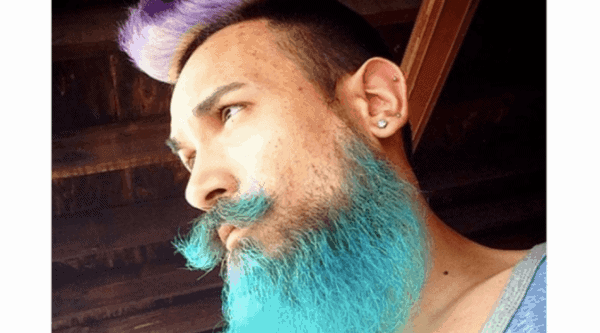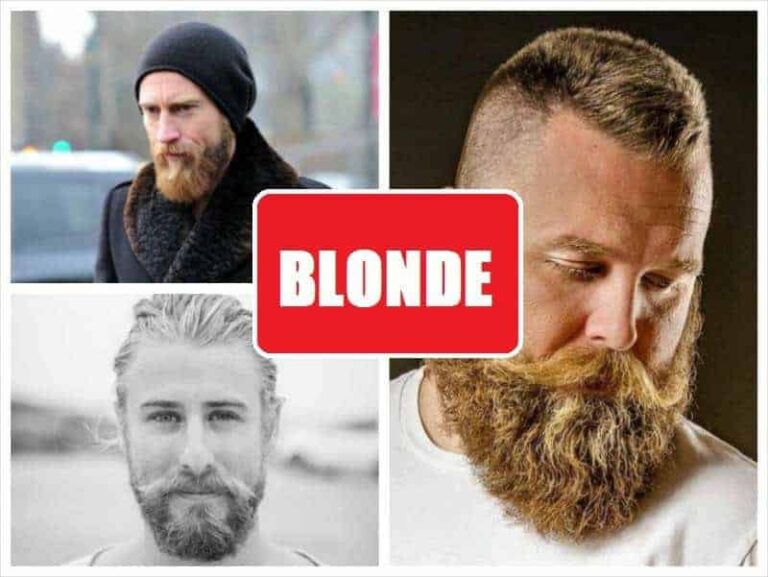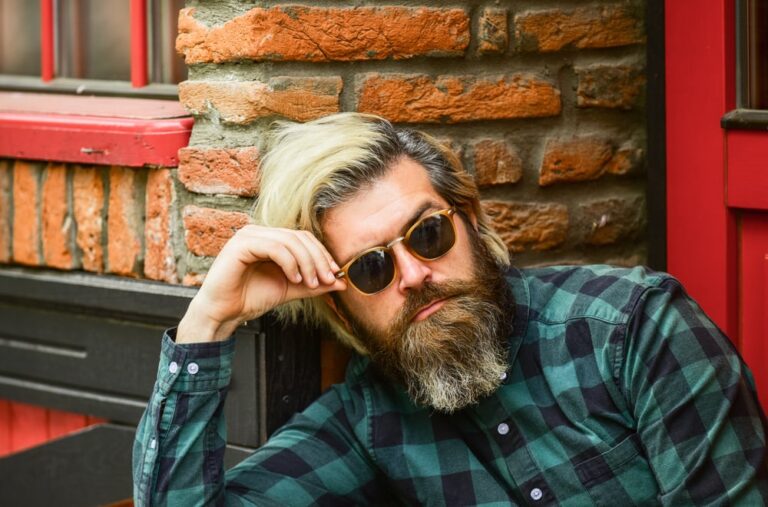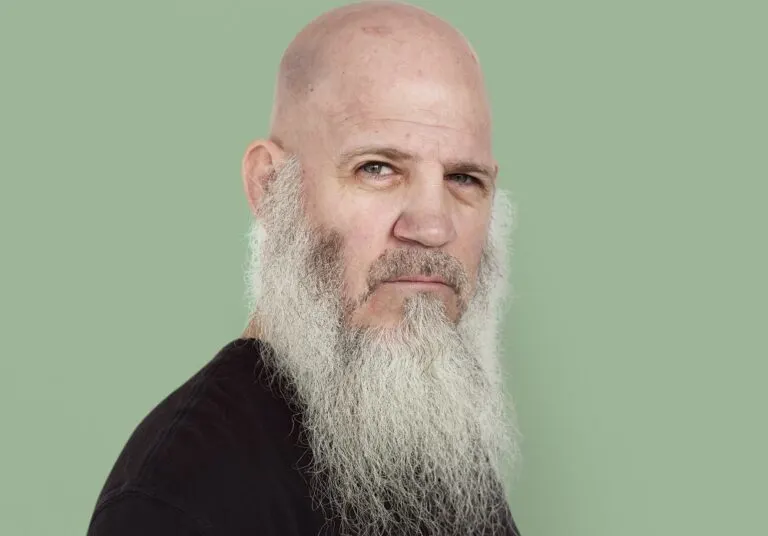Is Hair Dye Safe to Use On My Beard?
The art of beard grooming has come a long way, and dyeing one’s beard is a trend that continues to gain traction. It’s no surprise, really. Those pesky gray hairs can make your beard look less youthful. But the question is can you use hair dye on beards? Is it Safe?
Yes, you can use hair dye on your beard. But it is not recommended to do so. The facial skin is more sensitive than the skin on the scalp and beard hair is coarser than the head hair.
Let’s explore the differences between hair dye and beard dye, the reasons why hair dye is not recommended for beard use, and if you still want to use it then how to.
Hair Dye vs. Beard Dye

Though hair dye and beard dye might share some ingredients, there are essential differences in their formulation and purpose. Hair dye offers a broader range of colors and options. Beard dye focuses on natural shades and gentler formulas for sensitive skin. There are some key differences between the two.
1. Purpose:
- Hair dye is primarily used to change the color of hair on the scalp, either to cover gray hair or to achieve a new look. It is suitable for both men and women.
- Beard dye, on the other hand, is specifically formulated for facial hair, such as beards and mustaches. It is primarily used by men to cover gray beards or to achieve a uniform color.
2. Formulation:
- Hair dye formulations often contain stronger chemicals to penetrate the thicker hair strands found on the scalp. Ammonia and hydrogen peroxide are common ingredients used to open the hair cuticle and deposit color.
- Beard dye is usually gentler, as facial hair and the skin underneath can be more sensitive. Beard dyes often contain lower concentrations of chemicals and may use alternative ingredients, like natural colorants or ammonia-free formulas, to reduce irritation.
3. Application:
- Hair dye is typically applied to the entire head of hair or specific sections for highlights or lowlights. The process may require the use of gloves, a brush, and a mixing bowl to ensure even coverage.
- Beard dye is applied directly to facial hair using a brush, comb, or applicator. As the area is smaller, the process is generally quicker and more precise.
4. Color variety:
- Hair dye is available in a wide range of colors, from natural shades to vibrant hues like red, blue, and purple. This offers more creative options for those looking to experiment with their look.
- Beard dye typically offers a more limited color range, focusing on natural shades like brown, black, and gray. This is because the primary purpose of beard dye is to blend with or cover natural hair color.
5. Duration:
- Hair dye can be permanent, semi-permanent, or temporary. Permanent hair dye lasts the longest, typically requiring touch-ups every 4-6 weeks as hair grows. Semi-permanent and temporary hair dyes fade gradually with each wash.
- Beard dye tends to be semi-permanent or temporary, as facial hair grows more quickly and requires more frequent touch-ups. Depending on the product and individual hair growth, beard dye usually lasts 2-4 weeks.
Reasons To Avoid Dyeing Your Beard with Hair Color
Though you can use hair dye to color your beard here are the reasons you shouldn’t:
1. Allergic Reactions
One potential risk of using hair dye on your beard is an allergic reaction. Hair dyes often contain harsh chemicals, such as ammonia and hydrogen peroxide, which can cause an adverse reaction when applied to the sensitive skin on your face. This can lead to redness, itching, and even more severe reactions like blisters or burns.
2. Skin Irritation

Even if you’re not allergic to the ingredients in hair dye, you may still experience skin irritation. The chemicals in hair dye can be drying and irritating to the delicate facial skin, which can result in discomfort and dryness.3. Inconsistent Color Results
Another potential issue with using hair dye on your beard is that it may not produce the desired color results. Hair dye is formulated to work best on the thicker hair found on your head, so using it on your beard could result in uneven color or a shade that’s too dark or intense.
4. Facial Skin Sensitivity
The skin on our faces is more delicate and sensitive than the skin on our scalps. Hair dyes are created with the understanding that they will be applied to the more resilient scalp skin. As a result, using hair dye on the face can cause irritation and other issues due to the harsh chemicals involved.
5. Beard Hair Texture

Beard hair is thicker and more robust than the hair on our heads. This difference in texture means that beard hair needs a different kind of dye or a longer processing time. Hair dye may not provide consistent color coverage for beard hair and could even lead to patchy results.
How To Color Your Beard with Hair Dye
Hair dye offers more color options than beard dye. For this reason, you might still be interested in dyeing your beard with hair dye. To minimize the risks, follow these steps:
1. Choose the right hair dye
There are three primary types of hair dye: permanent, semi-permanent, and temporary. Permanent hair dye contains a combination of ammonia and peroxide, which penetrate the hair shaft and permanently change the hair color.
Semi-permanent hair dye contains little or no ammonia and only deposits color onto the surface of the hair shaft, fading gradually over time. Temporary hair dye doesn’t penetrate the hair shaft and usually washes out after a few shampoos.
It is best to use semi-permanent hair dye for coloring your beard because it is less harsh and doesn’t contain ammonia. You can find a wide range of semi-permanent hair dyes available at your local drugstore or online.
2. Perform an allergy test
This is an essential step to ensure that you don’t experience any adverse reactions to the hair dye, such as itching, redness, or irritation.
Mix a small amount of the hair dye according to the instructions. You won’t need much for an allergy test, so only mix what’s needed for testing purposes. Select a small, discreet area on your skin to perform the test.
Apply the dye with a cotton swab or a clean fingertip to the test area. Allow the hair dye to remain on your skin for 2 to 4 hours. Do not wash the test area during this time to get accurate results.
After the specified waiting period, check the test area for any signs of irritation, such as redness, itching, or swelling. If you experience any of these symptoms, you should not proceed with dyeing your beard.
3. Use a barrier cream
Apply a barrier cream or petroleum jelly around the beard area to protect your skin from staining and irritation during the dyeing process. To do this effectively:
- Clean the skin surrounding your beard, ensuring it’s free of dirt, oil, or sweat.
- Using your fingers, apply a thin layer of barrier cream or petroleum jelly around the edges of your beard, including your neck, cheeks, and upper lip area.
- Be cautious not to get the barrier cream on your beard hairs, as it can prevent the dye from adhering properly.
4. Mix the Hair Dye and Apply it to Your Beard
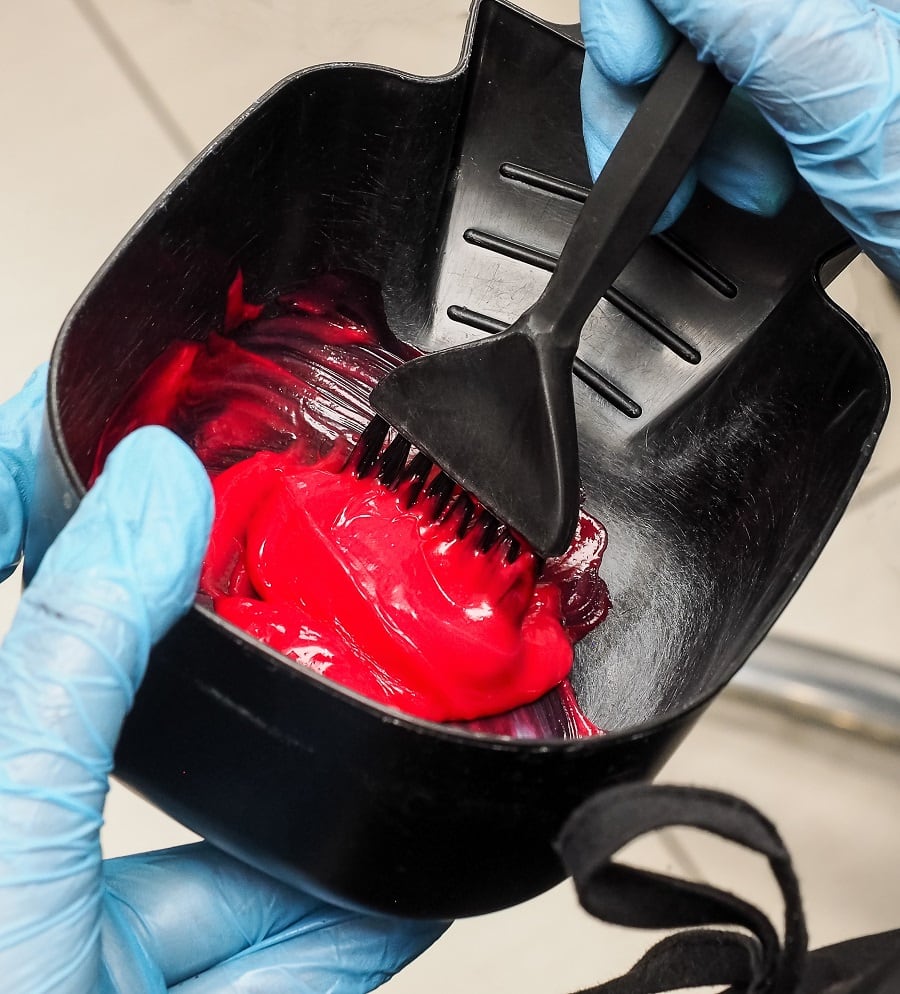
Carefully read and follow the manufacturer’s instructions for mixing and applying the hair dye. This will help you achieve the best results and minimize any potential issues.
When applying the hair dye, use a color brush or applicator and work in small sections to ensure even coverage. Take your time and be as precise as possible to avoid staining your skin.
Keep track of the processing time and do not leave the dye on for longer than recommended. Over-processing can lead to damaged facial hair or an undesirable color outcome.
After the processing time is up, thoroughly rinse your beard with lukewarm water to remove any excess dye. Use a color-safe shampoo and conditioner to ensure your beard remains soft and moisturized.
FAQ’s
1. How often should I reapply hair dye to my beard?
The frequency of reapplication depends on the rate of your beard growth and how quickly the color fades. Semi-permanent dyes last for 4-12 washes, while permanent dyes last until your beard grows out. Generally, you may need to reapply hair dye on your beard every 4-6 weeks.
2. How long to leave hair dye on beard?
It is recommended to leave the hair dye on your beard for 15 to 30 minutes. The more time you will leave the dye the darker the color of your beard will be.
3. Can I use henna on my beard?
Yes, henna is a natural alternative to beard dye and less damaging than hair dye. It is derived from the leaves of the henna plant. But Henna provides a limited range of colors, mainly red and brown tones.

